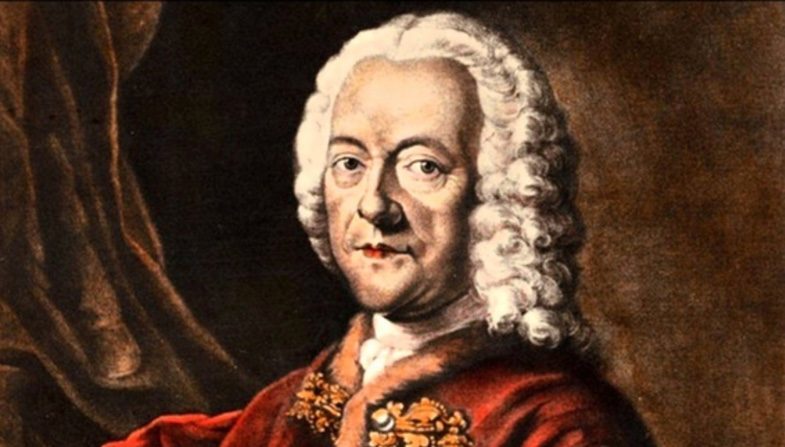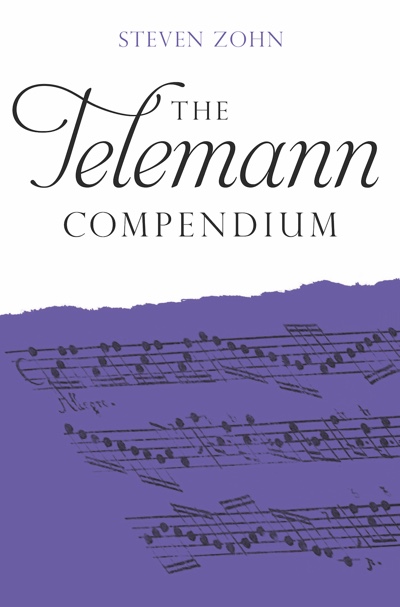by Nicholas Lockey
Published June 8, 2020

The Telemann Compendium. Steven Zohn. Boydell Press, 2020. xii + 292 pages.
As the only English-language resource of its kind, this excellent book should be considered a long overdue and much welcomed addition for libraries and anyone with an interest in 18th-century music. The Telemann Compendium is the fourth entry in a series by the Boydell Press, with previous volumes devoted to Vivaldi, Rameau, and Janáĉek. These reference tools — primarily built around a central dictionary that contains summaries of the latest knowledge on a variety of topics — are geared towards our era of the keyword and search term and prove that information is only as useful as it is well-organized and easily retrievable.
 As the series preface notes, there are entries for “people, institutions and places connected with the composer; musical, analytical and historical terminology of particular relevance to them; significant events in the reception history of their music; the genres in which they composed; individual compositions or groups of compositions — in short, anyone and anything judged to be pertinent.” Each entry includes abbreviations identifying the most relevant literature (full citations are given in the bibliography), providing the reader with initial avenues for further exploration.
As the series preface notes, there are entries for “people, institutions and places connected with the composer; musical, analytical and historical terminology of particular relevance to them; significant events in the reception history of their music; the genres in which they composed; individual compositions or groups of compositions — in short, anyone and anything judged to be pertinent.” Each entry includes abbreviations identifying the most relevant literature (full citations are given in the bibliography), providing the reader with initial avenues for further exploration.
The Telemann Compendium is therefore an excellent one-stop shop for answering important introductory questions for anyone who: (1) wants to perform a piece by Telemann, (2) hears a Telemann piece and is curious to know more, (3) wants to incorporate one or more aspects of Telemann’s life and works into their research and needs a quick guide to the recent state of knowledge, or (4) is just plain curious to wade into the world of Telemann and his music. In addition to the up-to-date information and extensive cross-referencing, the Compendium deserves praise for the breadth of the topics that receive entries, which is no small feat for a composer who lived such a long, productive, and intriguing life.
As Steven Zohn notes, difficult choices had to be made to avoid producing a tome of grossly excessive length, so we are limited, for instance, to the people with the strongest connections to Telemann, and many famous individual works (especially for instrumental pieces) are discussed under entries for larger collections (“Musique de table,” “Six quatuors ou trios”), groups of works (“Duets,” “Methodical Sonatas”), and genres (“Concertos,” “Inauguration Music”). Two particularly valuable exceptions are the entries for every extant opera and major vocal work, as well as each of the known annual cantata cycles (under their common German nicknames). One might wish for entries on topics such as “Chronology” or specific types of dance movements in Telemann’s output (such as the minuet and gavotte), but these are addressed in the literature cited in the bibliography, and it would be difficult to ask for these at the expense of the delightful entries on Telemann’s strong passion for gardening and writing poetry, important aspects of a well-rounded view of his personality and endeavors beyond music.

The dictionary portion is preceded by a succinct but reasonably comprehensive biographical outline drawn mainly from information spread across the dictionary entries. This provides a good introduction to Telemann’s personal and professional life so the reader can better contextualize each dictionary entry. Following the dictionary, there is a works list (that constitutes almost half the length of the volume in this case!). This extremely well-organized and clear list (arranged into logical categories and generally following the popular TVWV numbers for vocal works and TWV numbers for instrumental works) is intended to be a quick reference tool, which is very convenient to have in a single volume. Even though there are no musical incipits or details on individual movements in multi-movement works (which would make the book too big to manually transport), it still provides a very good sense of the wealth of music that is available, details on principal keys and instrumentation for many works, chronological information when available, and select additional points of relevance. It is particularly helpful to have the church cantata entries alphabetically arranged in a table that includes a column identifying which cantata cycle they belong to (so a user can refer back to the dictionary entry for that cycle).
If these reasons are not themselves sufficient cause to celebrate this volume, it should be pointed out that the book is also fun to browse and makes an equally good choice for serious study or trivia night. Perhaps we are still suspicious of anyone who does not appear to struggle against the universe to create each work of art, but this book, and the research and performance history it draws upon, adds further proof that any lingering wariness of Telemann’s impressive productivity is baseless in terms of the sophistication and quality of his achievement.
Nicholas Lockey specializes in researching and performing music of the 17th and 18th centuries. He has taught courses in music history, theory, and ethnomusicology, and has led performance ensembles in both university and college preparatory settings.




